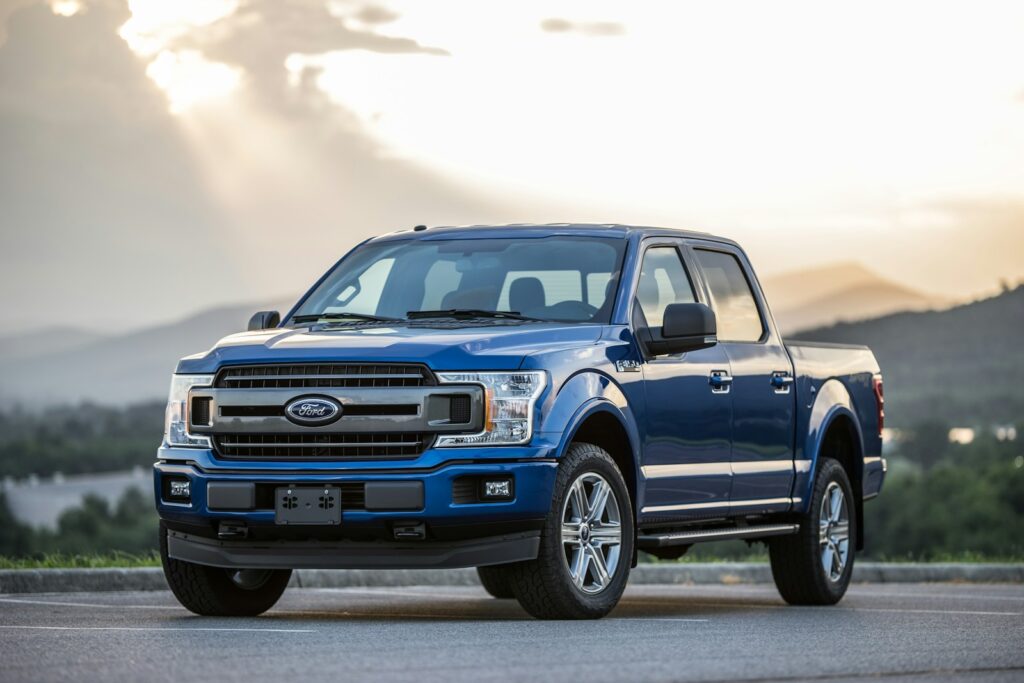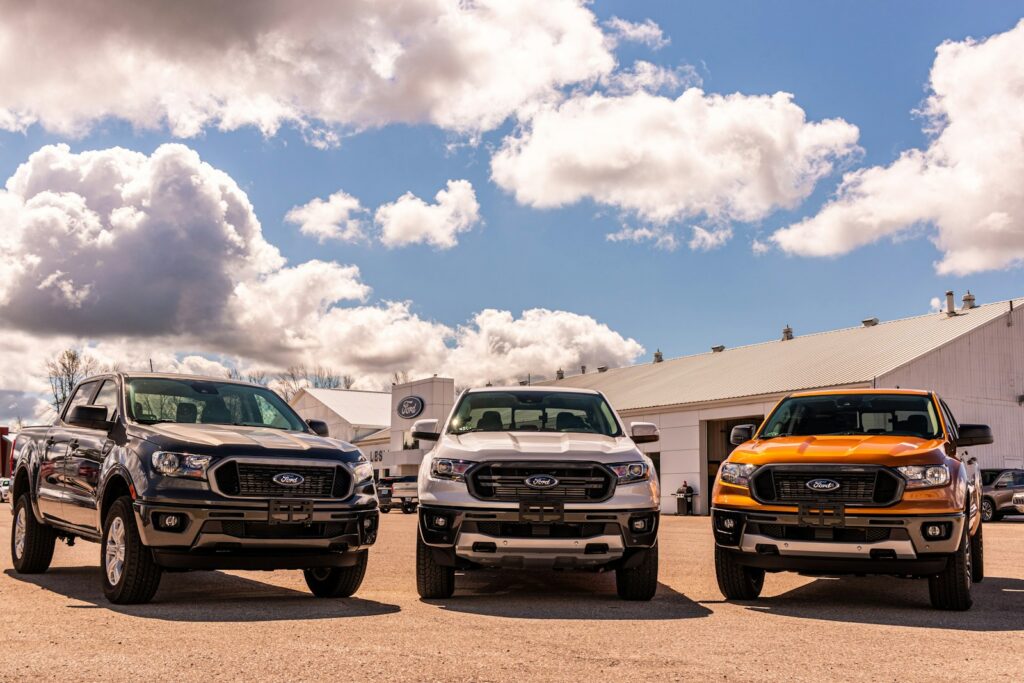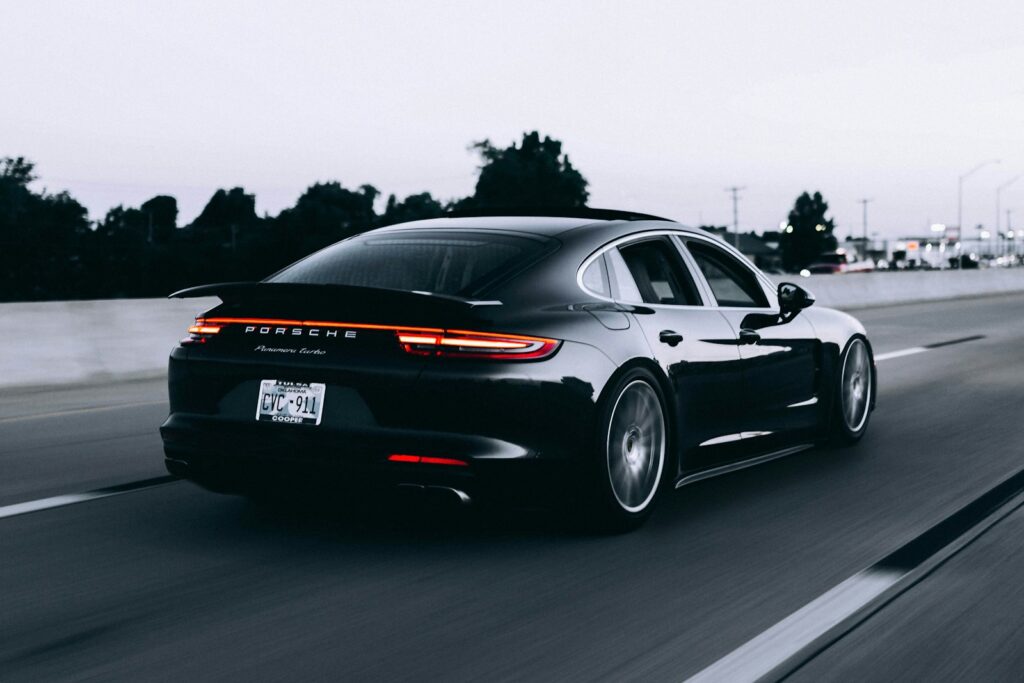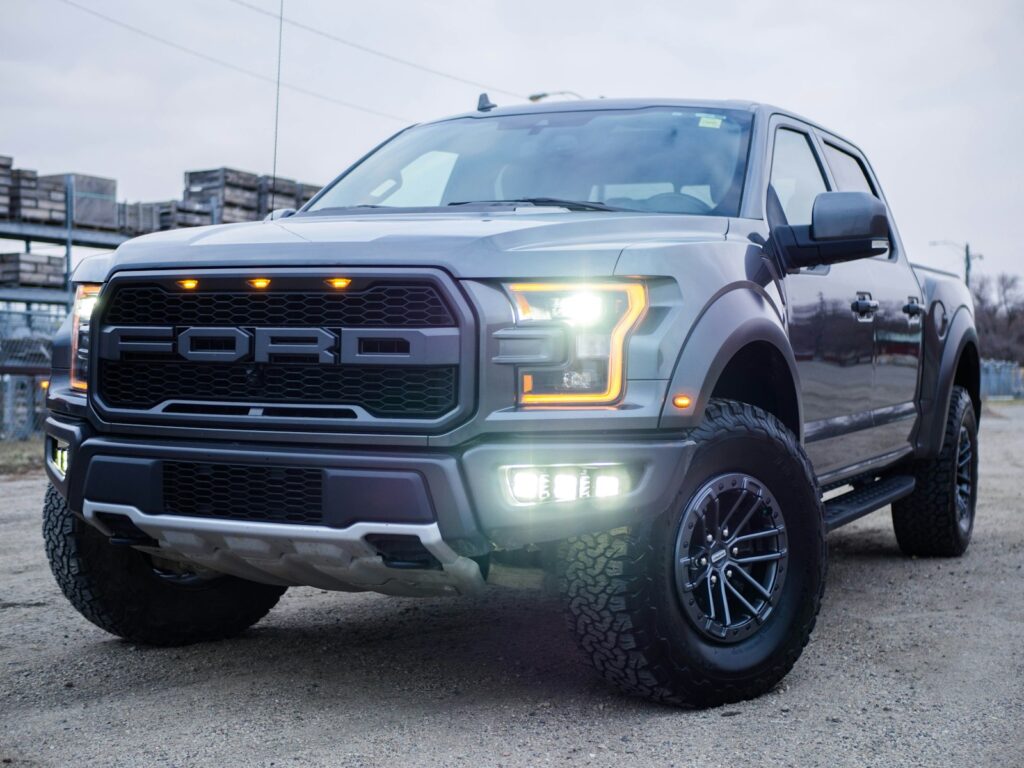The automotive industry is in the midst of a profound transformation, driven by an accelerating shift towards electric vehicles (EVs) and intensified global competition. This paradigm shift is compelling legacy automakers like Ford Motor Co. to undertake significant strategic realignments, which often involve difficult decisions regarding manufacturing footprint, workforce composition, and product portfolios. These decisions, while aimed at securing future competitiveness, frequently result in substantial societal and economic impacts.
Ford, a global automotive giant, exemplifies this complex transition. While it teases a “Model T moment” with innovative, affordable electric vehicles slated for production in Kentucky, the company simultaneously navigates the painful process of closing long-standing manufacturing plants and implementing widespread job cuts, particularly in Europe. This duality highlights the immense pressure on traditional carmakers to evolve rapidly, balancing ambitious electrification investments with the challenging realities of managing existing internal-combustion engine (ICE) operations and an evolving market.
This in-depth analysis will explore key facets of Ford’s current strategic maneuvers, beginning with the imminent closure of its Saarlouis plant in Germany and its far-reaching consequences. It will delve into the historical significance of the facility, the difficult choices that led to its abandonment, and the severe economic repercussions for the affected region. Furthermore, we will examine Ford’s broader EV strategy and how these localized closures are part of a much larger, industry-wide restructuring.
1. **Ford’s New EV Vision and Universal Platform: A Glimpse into the Future**Ford CEO Jim Farley recently heralded a forthcoming “Model T moment,” unveiling plans for a super affordable, all-electric, hyper-versatile small truck. This visionary vehicle, destined for production at the automaker’s Louisville, Kentucky, assembly plant, is designed to push the boundaries of affordability in the EV space, while adopting the popular form factor of a pickup truck, a quintessential American vehicle.
Initially launching as a truck, this new vehicle is projected to diversify into various other body styles, including multiple SUVs and potentially even a sedan. Farley has detailed several other impressive attributes, such as an “impressive range” and the capability to power a home during an outage for up to six days. Furthermore, it is expected to be “[Toyota] RAV4-sized” in terms of passenger accommodation, offering both a usable bed and a frunk in its design.
An intriguing claim from Farley posits the new truck will be “faster than the Mustang twin-turbo,” a statement that has sparked curiosity given the absence of a factory twin-turbo Mustang currently on sale. This might refer to the entry-level Ford Mustang EcoBoost, a single-turbo four-cylinder model. Central to this ambitious undertaking is Ford’s Universal EV platform, a novel architecture conceived to achieve significant cost savings, engineering ingenuity, and manufacturing advancements. This platform aims to streamline development, reduce parts count, minimize complexity, and decrease vehicle weight through innovative techniques.
Among the key innovations for this platform are “unicasting,” which involves larger and simpler casting techniques, and a significant reduction in fasteners. The new architecture will also feature 4,000 fewer feet of wiring, alongside a battery technology claimed to deliver equivalent range expectations with a third less size, implying 33 percent less capacity. This battery is identified as a newer, lower-cost LFP-style unit and will reportedly be structural, forming the vehicle’s floor.
Ford chief EV, digital, and design officer Doug Field highlighted a fundamental change in assembly methods, emphasizing that workers will no longer need to contort large components like dashboards or powertrains into body structures through door openings. This signals a radical departure from traditional assembly line practices, which have been dominant for nearly a century. Ford refers to this innovative approach as an “assembly tree,” where various sections of the vehicle are assembled in parallel before being integrated near the culmination of the process. While simple line drawings have offered glimpses of truck, small SUV, large three-row SUV, and van profiles, the first truck is not anticipated to roll off the Louisville plant floor until 2027 at the earliest.
Car Model Information: 2024 Cadillac Escalade V-Series
Name: Ford F-Series
Caption: 2022 Ford F-150 Lariat Luxury
Manufacturer: Ford Motor Company
Aka: Ford Lobo (Mexico, 1992–present)
Production: 1948–present
Class: Pickup truck#Full-size pickup truck
Layout: Front-engine, rear-wheel-drive layout,rear-wheel drive
Predecessor: 1941 Ford
Categories: All-wheel-drive vehicles, All Wikipedia articles written in American English, All articles that may contain original research, All articles with unsourced statements, Articles that may contain original research from September 2020
Summary: The Ford F-Series is a series of light-duty trucks marketed and manufactured by the Ford Motor Company since model year 1948 as a range of full-sized pickup trucks — positioned between Ford’s Ranger and Super Duty pickup trucks. Alongside the F-150 (introduced in 1975), the F-Series also includes the Super Duty series (introduced in 1999), which includes the heavier-duty F-250 through F-450 pickups, F-450/F-550 chassis cabs, and F-600/F-650/F-750 Class 6–8 commercial trucks.
Get more information about: Ford F-Series
Buying a high-performing used car >>>
Brand: Ford Model: small truck
Price: $131,116 Mileage: 22,239 mi.

2. **The End of the Ford Focus: An Iconic Retirement in Europe**After a distinguished 25-year tenure as Europe’s compact-car icon, the Ford Focus is preparing for its retirement. The final unit of this historically significant model is scheduled to roll off the assembly line at the Saarlouis plant in November 2025, marking the end of an era for both the vehicle and the facility that produced it.
Throughout its extensive run, the Focus proved to be a versatile and popular offering, spawning celebrated high-performance variants such as the ST and RS models. Its widespread appeal and consistent demand were instrumental in helping Ford achieve sales of millions of units across the globe, solidifying its status as a staple in the European automotive landscape and a testament to Ford’s engineering prowess in the compact segment.
However, the automotive market has undergone a decisive shift in consumer preferences. Today’s customers increasingly favor Sport Utility Vehicles (SUVs) and electrified vehicles, a trend that has prompted Ford to strategically pivot its entire lineup. Ford has explicitly announced its new direction, stating, “We are now focused on delivering a new generation of exciting electric vehicles,” a declaration that directly coincides with the cessation of Focus production.
This decision to discontinue the Focus underscores the rapid pace at which Europe’s car-buying habits are evolving. The retirement of such a long-standing and successful model is a clear indicator of the transformative pressures facing traditional automakers, as they adapt to environmental regulations and cater to a new wave of consumer demand for electric and larger vehicle formats.
Car Model Information: 2017 Ford Focus ST Base
Name: Ford Focus
Caption: 2018 Ford Focus ST-Line X
Manufacturer: Ford Motor Company
Production: 1998–2025
Class: Small family car
BodyStyle: hatchback
Layout: Front-engine, front-wheel drive,Front-engine, four-wheel-drive
Predecessor: Ford Escort (Europe)
ModelYears: 2000–2018 (North America)
Categories: 2000s cars, 2010s cars, 2020s cars, All articles with specifically marked weasel-worded phrases, All articles with unsourced statements
Summary: The Ford Focus is a compact car (C-segment in Europe) manufactured by the Ford Motor Company from 1998 until 2025. It was created under Alexander Trotman’s Ford 2000 plan, which aimed to globalize model development and sell one compact vehicle worldwide. The original Focus was primarily designed by Ford of Europe’s German and British teams. Production of the fourth generation Focus began in 2018 in Germany and China. In 2025, Ford announced that the Focus will no longer be built, in line with an announcement made in 2022.
Get more information about: Ford Focus
Buying a high-performing used car >>>
Brand: Ford Model: Focus
Price: $15,985 Mileage: 97,277 mi.

3. **Saarlouis: A Half-Century Pillar of German Automotive Manufacturing**For over five decades, the Saarlouis plant has stood as a monumental pillar of German manufacturing, anchoring the region’s economy since its establishment in 1970. Constructed on what was once an airfield, this facility quickly evolved into the birthplace of numerous beloved European Ford models, including the iconic Escort, the sporty Capri, and the popular Fiesta, alongside the Focus.
During its peak operational years, particularly in the 2000s, the Saarlouis factory boasted an impressive production record, assembling approximately 10 million vehicles in total. The site’s employment figures illustrate its profound regional impact, reaching its zenith in 1978 with a workforce of around 8,100 dedicated individuals, making it a cornerstone of local employment.
Even in the present day, the historical significance of the Saarlouis plant resonates deeply within the local community. Many residents recall with pride the era “when Saarlouis made the Escort,” highlighting the factory’s cherished place in the collective memory and identity of the region. This enduring sentiment underscores the plant’s role not merely as an industrial site, but as a central component of local heritage and economic stability.
However, this longtime engine of jobs and investment now faces unprecedented challenges. Mounting pressures from the rapidly changing automotive industry, characterized by the shift to electric vehicles and intense global competition, threaten the plant’s future. The eventual closure marks a profound turning point for Saarlouis, transforming a source of local pride into a symbol of industrial transition.

4. **Strategic Abandonment: Why Valencia Won Over Saarlouis for Next-Gen EVs**The fate of the Saarlouis plant was effectively sealed by 2022, when Ford made the critical decision to select its Valencia facility in Spain over Saarlouis as the primary site for the production of its next-generation electric cars. This strategic choice was driven by a meticulous evaluation of operational efficiencies and economic advantages, with Ford citing Valencia’s demonstrably lower costs and superior logistical infrastructure as decisive factors in its determination.
News of Valencia’s selection was met with widespread jubilation among its 6,000-strong workforce, and particularly within Spain’s UGT union. Union officials hailed the decision as “great news,” recognizing that it effectively secured thousands of jobs for at least a decade, providing a much-needed boost to regional economic stability and worker morale. The contrast with the sentiment in Germany could not have been starker.
Conversely, Germany’s Saarlouis plant, which at the time employed approximately 4,600 individuals, was left in a state of agonizing uncertainty. This strategic move, while making clear business sense from Ford’s perspective, underscored a broader geographical reorientation within Europe’s automotive manufacturing landscape, as production capabilities began to tilt perceptibly towards the south of the continent.
For Saarlouis, this decision marked an undeniable turning point, effectively sealing its future. Union officials in Germany subsequently transitioned their focus from fighting for the plant’s operational continuation to pressing for maximum compensation packages for their members, understanding that the facility’s long-term future was irrevocably doomed following Ford’s pivot to Valencia. This represented a shift from proactive preservation to reactive mitigation in the face of an inevitable closure.
5. **The Confirmed Closure: 6,400 Jobs Vanish at Ford’s Saarlouis Plant**The formal announcement came in January 2025: Ford confirmed its decision to cease all car production at the Saarlouis plant by November 2025. This declaration brought an end to 57 years of manufacturing history at the site, triggering a profound sense of loss and uncertainty across the region. The closure represents one of Ford’s largest European plant shutdowns in recent memory, signifying a momentous shift in its continental operations.
This single, pivotal decision is projected to directly eliminate approximately 4,600 Ford jobs at the Saarlouis facility. The ripple effects extend further, impacting the wider industrial ecosystem, with an estimated 1,800 additional jobs at nearby suppliers also slated for elimination. The cumulative loss of 6,400 positions underscores the sheer scale of the economic dislocation about to unfold in the Saarland region.
The human element of this corporate decision is palpable, as captured by a worker who somberly noted, “After November, there won’t be a Ford car made here.” This sentiment reflects the profound personal and professional implications for thousands of individuals who have dedicated their careers to the plant, and whose livelihoods are now directly threatened by its closure.
Local communities are bracing for a cascade of negative effects, extending beyond direct employment. Fears of “empty streets on payday,” the closure of local cafes, and even a decline in home prices are prevalent as the region collectively anticipates the extensive fallout from this industrial shutdown. The loss of Ford’s economic anchor is expected to reshape the social and financial fabric of the area dramatically.
6. **Regional Devastation: Saarland Braces for Economic Fallout**The Saarland region is now confronting the stark prospect of a localized depression, directly attributable to the Ford Saarlouis plant closure. The scale of the job losses is immense, with more than 6,000 positions, comprising 4,500 within the plant and an additional 1,500 at dependent suppliers, now “on the line.” This represents a catastrophic blow to an economy where entire communities have been meticulously built and sustained around these automotive jobs.
The broader economic life of the entire region, where several tens of thousands of jobs are intricately tied to the auto industry, stands in jeopardy. The pervasive influence of Ford’s presence means that local restaurants, retail shops, and the real estate market have all historically relied heavily on the regular flow of Ford paychecks. The cessation of these incomes will inevitably trigger a significant downturn in local commerce and consumption, creating a domino effect across various sectors.
Early indicators of this looming crisis are already emerging, with realtors reporting a noticeable decline in property prices as widespread uncertainty grips the market. The value of homes, a crucial component of personal wealth for many families, is diminishing in anticipation of a less robust local economy and reduced demand from a shrinking population of stable earners. This trend contributes to a sense of instability and insecurity among residents.
Markus Thal, a union leader, articulated the gravity of the situation without equivocation, stating, “We will now do what we are there for,” signaling the difficult but necessary process of negotiating the terms of these mass layoffs. What was once a vibrant “Ford city,” characterized by the security and opportunities afforded by a major industrial employer, now faces profound anxieties about the future, with the pressing question of where the next paycheck will originate weighing heavily on thousands of households.”

7. **Union’s Response and the Compromise at Saarlouis**With Ford’s definitive decision to abandon Saarlouis, the IG Metall union shifted its strategy from job preservation to securing the most favorable compensation for its members. District chief Joerg Köhlinger articulated this pragmatic concession, stating, “We could not achieve the best solution, so… the second-best option: to make job cuts as expensive as possible for Ford.” This approach reflected the formidable challenge faced by organized labor in the face of corporate restructuring driven by global shifts towards electric vehicle production.
By early 2024, the union had successfully negotiated a comprehensive severance package for the affected workers. This agreement included very generous severance terms, significant exit packages, and dedicated retraining funds designed to facilitate a smoother transition for those losing their livelihoods. Crucially, the deal also guaranteed no forced layoffs before 2032 for a portion of the workforce, and committed that 1,000 out of the remaining 3,750 factory workers would retain their positions through that year.
Despite these financial and security provisions, the profound impact of job loss remained. Line worker Anita Mayer succinctly captured the sentiment, noting, “We got our pay, but we lost our work.” The negotiated social plan, totaling approximately €95 million for severance, aimed to soften the blow. However, economists cautioned that the 2,000 new jobs promised by Vetter Pharma at the acquired site would only replace a fraction of the 6,400 positions lost, and the high-tech nature of these roles would necessitate extensive retraining for many former assembly line employees.

8. **Management’s Efforts and Miscalculations for Saarlouis**Before conceding to the plant’s closure, Ford’s management diligently explored various options to save the Saarlouis facility, highlighting an initial reluctance to completely dismantle its European manufacturing footprint. Reports indicated discussions with Chinese automotive giants like BYD and Chery, presenting Saarlouis as a potential European production hub for these burgeoning electric vehicle manufacturers. These efforts reflected Ford’s attempt to find an external solution for the plant within the rapidly evolving global auto industry.
Beyond engagements with foreign automakers, Ford also considered alternative industrial uses, even pitching the Saarlouis plant to a German solar-panel firm. These diverse, albeit ultimately unsuccessful, discussions extended through October 2023, underscoring the comprehensive efforts made by management. The failure to secure a new tenant or purpose for the facility signaled a critical juncture, indicating the profound difficulty in repurposing large-scale automotive infrastructure for different industrial applications.
Following these unsuccessful external overtures, Martin Sander, Ford Europe boss, pivoted strategy internally. He informed workers that the plant would instead become a “technology center,” aiming to salvage approximately 1,000 of the original 4,400 jobs. This revised plan, a substantial reduction from the existing workforce, immediately drew criticism from IG Metall. Union leader Joerg Köhlinger warned, “This will be expensive for Ford… we will send a signal so that other companies will be afraid to flatten sites,” signaling intense negotiations for a more favorable outcome for the workers.

9. **Ford’s Broader White-Collar Reductions**Ford Motor Co. is implementing ongoing white-collar job cuts across its global operations, a strategic move driven by cost reduction mandates and the company’s accelerating transition to electric vehicles. The automaker recently confirmed that hundreds of engineers and salaried employees were being notified of job eliminations. This followed the dismissal of approximately 200 Ford contract employees in the preceding week, marking a continuous effort to streamline its workforce.
Spokesman T.R. Reid noted that while these current cuts were substantial, they did not parallel the scale of the 3,000 white-collar workers and 1,000 contractors let go last summer, primarily in the U.S. The reductions disproportionately impact engineering departments, though all business units are affected. This reflects CEO Jim Farley’s assertion that a significant portion of Ford’s workforce lacks the necessary skills for the transition from internal combustion engines to battery-powered vehicles, necessitating a strategic recalibration of talent.
Farley characterized these layoffs as a more “real time” and consistent adaptation to change, moving away from past “big titanic events.” This approach allows Ford to continuously adjust to market demands while actively recruiting in critical new areas, such as software development. These cuts are integral to addressing a reported $7 billion cost disadvantage against competitors and funding a $50 billion investment in global EV development and production by 2026. Ford aims for its Model e EV unit to achieve pre-tax profitability with an 8% margin by late 2026, contingent on these aggressive cost-saving measures.
10. **F-150 Lightning Production Cuts and Market Shifts**Ford is significantly recalibrating its electric vehicle strategy, specifically impacting its F-150 Lightning production due to “slower than expected” demand. The company is drastically reducing its workforce at the Rouge Electric Vehicle Center (REVC) in Michigan, with only one-third of the original 2,100 workers remaining on-site from April 1, 2024. Production is being cut from three crews on two shifts to a single crew on one shift.
Approximately 700 REVC workers will transfer to the Michigan Assembly Plant for Bronco and Ranger production. The remaining 700 have been offered a $50,000 retirement package from 2023 contract negotiations or reassignment to the same plant, effectively avoiding direct job losses. This adjustment signifies a substantial reduction in the F-150 Lightning’s anticipated output, with UAW Local 862 President Todd Dunn stating targets have fallen from over 180,000 units to around 55,000.
Despite the F-150 Lightning being the best-selling electric pickup last year, it now faces heightened competition and a shifting market. Ford’s CFO, John Lawler, emphasized a strategic pivot towards smaller, more affordable electric vehicles, believing that “the game will not be fought and won with larger vehicles.” This new focus aims to launch low-cost EVs around $25,000 by 2026, positioning Ford to compete more effectively against Chinese manufacturers and Tesla in the growing affordable EV segment.
Car Model Information: 2024 Cadillac Escalade V-Series
Name: Ford F-150 Lightning
Manufacturer: Ford Motor Company
Related: Ford F-Series (fourteenth generation)
Assembly: Dearborn, Michigan
ModelYears: 2022–present
Production: April 2022 – present
Layout: Dual-motor, four-wheel-drive
Platform: Ford T platform#T3
Class: Pickup truck
Sp: us
Battery: lithium-ion
Motor: permanent magnet motor
ElectricRange: Unbulleted list
Abbr: on (extended battery)
Powerout: Unbulleted list
Charging: Unbulleted list
Designer: Unbulleted list
Wheelbase: cvt
Length: cvt
Width: cvt
Height: cvt
Weight: cvt
Categories: All Wikipedia articles in need of updating, All Wikipedia articles written in American English, All articles containing potentially dated statements, All articles with unsourced statements, Articles containing potentially dated statements from June 2022
Summary: The Ford F-150 Lightning is a battery electric full-size light duty truck unveiled by the Ford Motor Company in May 2021 as part of the fourteenth generation Ford F-Series. Four models have been announced, and all models initially will be dual-motor, four-wheel-drive, with EPA range estimates of 240–320 mi (390–510 km). A commercial-grade version of the all-wheel drive (AWD) truck is sold in the United States, with higher-power/trim/range models also sold. The F-150 Lightning began production on April 26, 2022.
Get more information about: Ford F-150 Lightning
Buying a high-performing used car >>>
Brand: Ford Model: F-150 Lightning
Price: $131,116 Mileage: 22,239 mi.
Read more about: Why Are EV Owners Ditching Their Electric Dreams? 15 Reasons Why Some Are Switching Back to Gas Cars
11. **Germany’s Auto Sector in Deepening Crisis**Germany’s automotive sector is enduring a profound, industry-wide crisis, exemplified by Ford’s Saarlouis closure. Recent data reveal nearly 51,500 jobs vanished in a single year, making automotive the hardest-hit industrial branch and accounting for approximately half of Germany’s total factory job losses. This contraction, the worst since the 2008 financial crisis, signals a systemic challenge extending beyond individual automakers to the broader economic life of the nation.
The crisis is not isolated to Ford; European auto suppliers, including Bosch and Continental, announced over 54,000 job cuts in 2024 alone, surpassing reductions from the previous two pandemic years combined. Even major German carmakers like Volkswagen are planning unprecedented factory closures. Analysts diagnose a “toxic mix” of persistently weak demand, escalating costs, increasing tariffs, and fierce competition, forcing widespread, painful restructuring across the industry.
Geopolitical trade policies exacerbate the situation; U.S. tariffs on EU cars have contributed to steep profit drops for Germany’s “Big Three”—BMW, Mercedes-Benz, and Volkswagen—in early 2025. Furthermore, Europe’s ambitious green agenda, while promoting emissions reductions, has inadvertently accelerated job losses, as EV plants often create fewer assembly roles than traditional ICE facilities. This “environmental paradox” means workers are displaced before new green jobs materialize, creating social instability and political pressure on Chancellor Olaf Scholz’s government, which faces criticism for its handling of core industries amid the green transition.

12. **The Rising Challenge of Chinese EV Manufacturers**The rapid ascent of Chinese electric vehicle (EV) manufacturers presents a significant and escalating challenge to Europe’s established automotive industry. Despite EU duties up to 37.6% on Chinese imports, brands like BYD and MG are aggressively expanding their presence, offering feature-rich vehicles at highly competitive prices. BYD alone has tripled its European sales to approximately 12,000 cars per month by mid-2025, forcing European automakers to respond with urgency to this unexpected pace of encroachment.
This competitive pressure is intensified by a profound generational shift in consumer preferences. Younger Europeans are increasingly less tied to traditional brands, viewing Chinese EVs as high-tech, affordable alternatives that prioritize connectivity and range. Industry surveys indicate a rapid decline in brand loyalty among millennial and Gen Z buyers, who are attracted by the “gadgets” and value offered by new entrants. This cultural shift is evident in the market, with BYD and MG collectively holding around 5% of the Western European market, up from 4% a year prior.
The confluence of price wars, technological gaps, and evolving consumer loyalties compels legacy original equipment manufacturers (OEMs) to dramatically slash costs across their entire value chains to remain competitive. This imperative for cost reduction, directly driven by the formidable Chinese challenge, is a primary factor behind the extensive restructuring and job cuts observed across the European automotive sector, including Ford’s actions at Saarlouis. The rise of Chinese EV manufacturers is thus not merely a market disruption but a transformative force reshaping the global automotive landscape and accelerating the need for fundamental operational re-evaluation.
An ending paragraph of the article:
Read more about: The Automotive Gauntlet: 11 Car Brands Facing an Uncertain Future in the U.S. Market
The complex narrative of Ford’s Saarlouis plant, its regional aftermath, and the broader seismic shifts across the European and global automotive sectors offers a critical case study in industrial transformation. It underscores the immense challenges faced by legacy automakers striving to balance employment stability with radical innovation and adaptation to a volatile market. As stringent CO₂ regulations, evolving consumer preferences, and aggressive competition from Chinese EV manufacturers redefine the industry, the strategic pivots and public policies enacted today will critically determine the future of the continent’s storied car heritage, setting a crucial precedent for other industries navigating similar crossroads.










